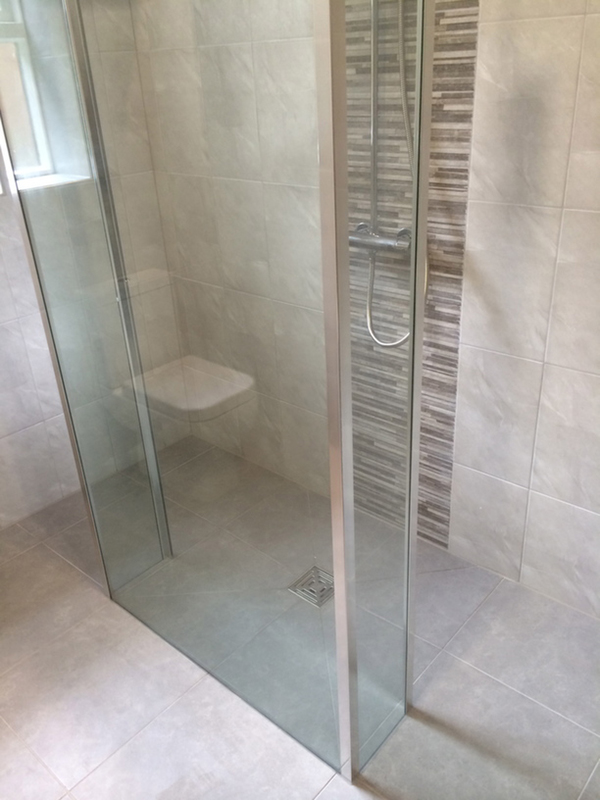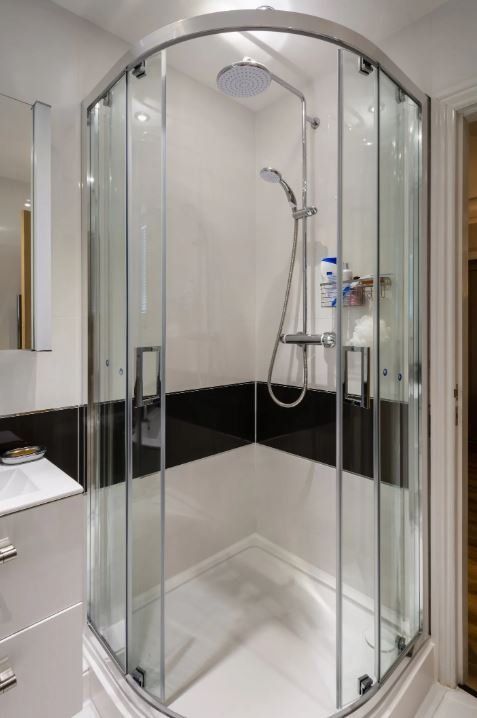Full Tutorial for Installing a New Shower Unit
Full Tutorial for Installing a New Shower Unit
Blog Article
We've unearthed this article about How to Install a Freestand below on the internet and decided it made perfect sense to share it with you on this site.

A successful shower installment requires cautious planning as well as a lot of work. Most of the times, you will require to do 3 kinds of jobs: framing wall surfaces, setting up the plumbing, and completing wall surfaces.
Preparation
To start with, you must select the sort of shower that you want to set up. It is important to establish whether the picked shower is capable of handling particular systems and can control a secure level of water with the central heating boiler. Most shower units nowadays are made to be adaptable to different water stress (such as stored warm water as well as chilly keys).
It is also important to think about the water pressure and also the planning of the piping and also drainage for the shower
Various Types of Shower Units
Technique
Depending upon the kind of shower you want to mount, the shower head must either be fitted in order to prevent its contact with the water in the bathroom listed below or the base tray, or it has to have a check valve.
Before starting, it is a good idea to note the settings of the shower head and also control, and also to prepare the pipe-work included. In addition, the water drainage system to get rid of the drainage will require to be intended. Both settings of the cord path as well as the shower switch will also require to be taken into consideration if a rapid or electrical shower system is being set up.
Use the direction guide provided with the shower unit to fit the shower control.Before suitable the pipes that will supply the water to the shower system, it is important to remove the water system. In order to secure the pipelines, they should be given a waterproof covering and also fitted with isolating shutoffs. The pipelines can then be hidden right into the wall and also plastered over to neaten the total look.
Fit the base tray, shower head, and installations.
Connect the main shower control to the pipelines that will be supplying the water (This may call for a female screw thread adapter).
Reconnect the water system as well as test the pipes for any type of leakages, as some may need tightening.
If you are installing an electrical shower, keep in mind to turn off the electrical power supply before making any kind of electrical connections. As soon as these links have actually been made (there must be support within the instruction manual), the power supply can be switched back on.
Readjusting Water Pressure to Match Your Shower
The cold water tank can be raised to a higher height (in some cases just 150mm (6inches)) by fitting a solid wooden support under it - possibly composed of struts and also blockboards. If you pick this option, the primary and distribution pipelines will certainly additionally need to be elevated to satisfy the new elevation of the tank.
Additionally, a booster pump (a solitary pump or a dual/twin pump) can be fitted. Whichever kind is picked, it has to be attached right into the power supply in order to operate.
Piping and also Water drainage
It is best to utilize 15mm diameter supply pipelines, and also make the go to the shower as short as well as straight as feasible so regarding preserve optimal pressure as well as minimise warmth loss. Furthermore, by reducing the use of joints for pipe edges, you can lower the resistance in the flow of the water. You can accomplish this by bending the pipes instead.
Many Typical Mistakes
How Do You Install a Shower? Follow This Guide
Installing a Shower at a Glance
Tools & Materials: Level, electric drill, caulk, hole saw, cedar shims, shower unit Step 1: Drill pilot holes Step 2: Prep fixture holes Step 3: Move unit into place Step 4: Caulk corners and base Step 5: Attach door Step 6: Install shower pan Whenever plumbing is involved in a DIY project, people worry about what might go wrong. The truth is that installing a shower isn’t that complicated, and you can save a lot of money by doing it yourself. You shouldn’t need to make any alterations to your plumbing to complete the job, and most of the tools you need will be provided in your new shower kit.
Can I Install a Shower Myself?
Even if you’ve never installed a shower before, you’ll find this to be a project that is perfectly suited for DIYers with a moderate level of experience. Whether you're doing a bathtub conversion or installing a new stall, most of what you need comes in shower kits that you can purchase from a hardware store. The first thing you need to do is determine what type of shower stall you want.
Single-panel stalls are the easiest to install because they come preassembled. All you need to do is put them in place. Multi-panel showers require a few additional steps, but you’ve got more control over the appearance of your unit. Multi-panel units are also much easier to handle if you’re going to do the installation without any help.
Be sure to take all appropriate safety precautions, such as wearing eye protection and gloves. When you’re removing or installing a shower unit, you might kick up debris that could hurt your eyes. You’ll also need to work with equipment that will get extremely hot, so be sure to have safety gloves handy.
Tools and Materials
2- to 4-foot level Electric drill with a 1/8-inch drill bit Caulk 2-inch hole saw Cedar shims The unit itself Before You Begin: Prep the Space
It’s highly important to measure your space accurately before putting the stall in. Measuring from the floor upward and from each corner outward will ensure you’ve got the right measurements. What you’re looking for is where the plumbing apparatuses are going to come through the stall. Transfer these measurements over to the back of your unit by drawing the locations of these holes using a pencil or marker.
Pull out your old shower and make sure to scrape off all the old caulking. Be thorough because you want to work with smooth surfaces for the best installation. Once you’ve pulled out your existing shower, you need to make sure that the floor is clean and dry. The best way to clean debris is with a shop vacuum, as it’ll soak up water and dirt together.
If you’re experiencing any plumbing issues, such as low water pressure, this is a perfect opportunity to solve them. Make sure that the pipes themselves are not in need of patching and clean your showerhead. When you turn the water back on after your project, check the pipes for signs of wear or disrepair. Anything beyond minor repairs should be handled by a plumber, and this is the best time to bring in a professional.
If the floor has any moisture at all, don’t proceed until it’s completely dry. The last thing you need is for the floor to rot or invite mold and mildew into your base. Once everything is dry, apply waterproof wallboard to the walls. This can be attached with screws or nails, then sealed with caulk so that water doesn’t seep into any crevices.

Do you appreciate more info about How to Build a Shower Enclosure for Your DIY Bathroom? Try to leave a short review directly below. We'd be delighted to know your opinion about this review. We are looking forward that you come back again later on. In case you appreciated our blog post please be sure to share it. Many thanks for your time. Come back soon.
Schedule Appointment Now Report this page